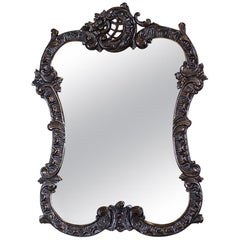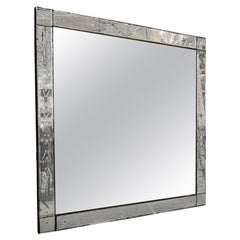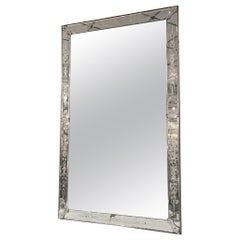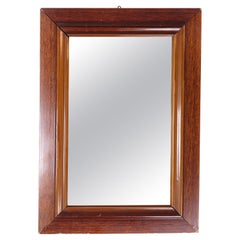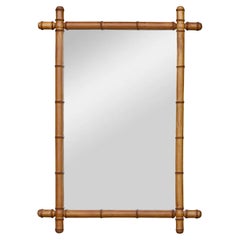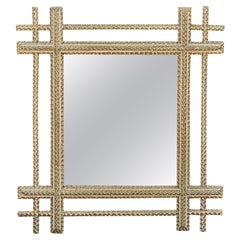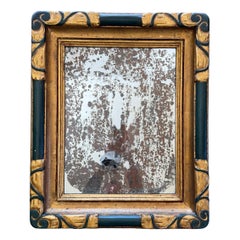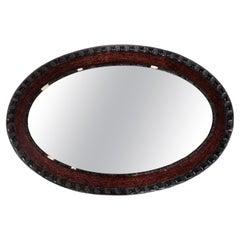Mirror From 1920
Early 20th Century European Rococo Revival Wall Mirrors
Mirror, Walnut
Vintage 1920s French Art Deco Wall Mirrors
Brass
Early 20th Century French Wall Mirrors
Mirror
Early 20th Century French Wall Mirrors
Mirror
Vintage 1920s Danish Scandinavian Modern Wall Mirrors
Mahogany
Early 20th Century French Rustic Wall Mirrors
Faux Bamboo, Mirror, Wood
Early 20th Century French Folk Art Wall Mirrors
Mirror, Wood
Early 20th Century European Wall Mirrors
Giltwood
Vintage 1920s Danish Scandinavian Modern Wall Mirrors
Oak
Vintage 1920s Italian Art Deco Wall Mirrors
Mirror, Wood
Vintage 1920s Danish Scandinavian Modern Wall Mirrors
Oak
Vintage 1920s Swedish Scandinavian Modern Wall Mirrors
Pewter
Vintage 1920s Swedish Art Deco Wall Mirrors
Pewter
Antique Early 1900s French Rococo Wall Mirrors
Mirror, Giltwood
Antique Early 1900s French Rococo Wall Mirrors
Mirror, Giltwood
Early 20th Century Wall Mirrors
Mirror, Giltwood
2010s American Wall Mirrors
Mirror
Early 20th Century French Rustic Wall Mirrors
Walnut, Mirror, Faux Bamboo
Early 20th Century French Wall Mirrors
Mirror
Early 20th Century French Wall Mirrors
Mirror
Antique Early 1900s Italian Louis XV Wall Mirrors
Mirror, Walnut
Antique Early 1900s Italian Wall Mirrors
Glass
Early 20th Century French Wall Mirrors
Faux Bamboo, Beech, Mirror, Wood
Early 20th Century American Chandeliers and Pendants
Metal, Brass
Early 20th Century American Chandeliers and Pendants
Metal, Brass
Vintage 1920s French Art Deco Sideboards
Chrome
Vintage 1920s English Gothic Console Tables
Glass, Wood
Vintage 1920s Italian Art Deco Wardrobes and Armoires
Steel
Vintage 1920s Italian Mid-Century Modern Sideboards
Glass, Mirror, Lacquer, Parchment Paper
20th Century French Neoclassical Wall Lights and Sconces
Crystal, Silver Plate
Vintage 1920s French French Provincial Wall Mirrors
Mahogany
Vintage 1920s French Wall Mirrors
Metal
Vintage 1920s Italian Art Deco Wall Mirrors
Chrome
Vintage 1920s French Art Deco Wall Mirrors
Chrome
Early 20th Century Wall Mirrors
Gold Leaf
Vintage 1920s English Gothic Console Tables
Wood, Glass
Early 20th Century French Louis XVI Wall Mirrors
Mirror, Walnut
Early 20th Century French Wall Mirrors
Mirror
Early 20th Century French Wall Mirrors
Mirror
Vintage 1920s Spanish Art Deco Wall Mirrors
Walnut
Vintage 1920s Italian Rococo Wall Mirrors
Vintage 1920s American Art Deco Wall Mirrors
Bronze
Vintage 1920s American Art Nouveau Trumeau Mirrors
Plaster, Hardwood
Vintage 1920s Italian Wall Mirrors
Glass, Mirror
Vintage 1920s French Wall Mirrors
Mirror
Vintage 1920s Art Deco More Mirrors
Brass
Vintage 1920s Danish Other Wall Mirrors
Mirror, Mahogany
Vintage 1920s European Wall Mirrors
Mirror, Wood
Vintage 1920s Danish Other Wall Mirrors
Mirror, Mahogany
Vintage 1920s European Art Deco Wall Mirrors
Chrome
Early 20th Century French Wall Mirrors
Wood, Mirror
Vintage 1920s French French Provincial Wall Mirrors
Mirror, Hardwood
Vintage 1920s French French Provincial Wall Mirrors
Giltwood
Early 20th Century American Wall Mirrors
Mirror
Early 20th Century French Sunburst Mirrors
Mirror, Giltwood, Paint
Early 20th Century French Rustic Wall Mirrors
Walnut, Mirror, Faux Bamboo
Early 20th Century French Wall Mirrors
Vintage 1920s French French Provincial Wall Mirrors
Wood
Early 20th Century French Rustic Wall Mirrors
Faux Bamboo, Mirror, Walnut
Early 20th Century Scandinavian Art Deco Wall Mirrors
Wood
- 1
Mirror From 1920 For Sale on 1stDibs
How Much is a Mirror From 1920?
- What do I wear to a 1920s party?1 Answer1stDibs ExpertMarch 3, 2023To a 1920s party, you can wear a short fringed or beaded flapper dress, layers of long beaded or pearl necklaces, elbow-length gloves and a feathered headband. Another option is to wear an off-white men's suit. Shop a selection of vintage apparel on 1stDibs.
- 1stDibs ExpertMarch 22, 2022In the 1920s, flappers often wore straight, fitted dresses with plunging necklines and knee-length hems. Fringe was a common embellishment used at the time. Flappers also sported pumps and opted for bras and lingerie instead of corsets for undergarments. Shop a variety of vintage clothing on 1stDibs.
- 1stDibs ExpertApril 5, 2022Flappers were young women known for their energy who pushed the boundaries of freedom for women of that era. The classic image of a 1920 flapper is a party girl who wore make-up, lingerie and a knee-length, straight silk dress. Flappers often had shorter hairstyles, like a bob. Find a variety of 1920s nostalgia items, including flapper dresses, on 1stDibs.
- What is 1920s furniture called?1 Answer1stDibs ExpertNovember 13, 2024What 1920s furniture is called depends on its style. However, the most prominent design style of the decade was Art Deco. The term alone conjures visions of the Roaring Twenties, Machine Age metropolises, vast ocean liners, sleek typography and Prohibition-era hedonism. The iconic movement made an indelible mark on all fields of design throughout the 1920s and ’30s, celebrating society’s growing industrialization with refined elegance and stunning craftsmanship. Art Deco furniture often featured bold geometric lines, floral forms, shimmering mirrored finishes, sleek metal accents, and the use of expensive materials such as shagreen or marble as well as exotic woods such as mahogany, ebony and zebra wood. On 1stDibs, find a diverse assortment of Art Deco furniture.
- 1stDibs ExpertApril 5, 2024The clothing style in the 1920s that most people think of first is the flapper style. Women who dressed in this style sported loose-fitting, short dresses, often outfitted with drop waists and fringe. Small cloche hats and headbands were signature accessories of the flapper look. During the decade, pleated tennis skirts and cardigan sweater sets left the courts and became staples of some women's everyday styles. For men, soft collars replaced stiff, starched ones, and simple single and double-button suit jackets worn without waistcoats became trendy. Trousers also took on a new shape with wider-cut legs, and Oxford bags gained popularity. On 1stDibs, shop a variety of 1920s apparel and accessories.
- What are 1920s dresses called?1 Answer1stDibs ExpertFebruary 13, 2023The iconic dresses from the 1920s are called flapper dresses. This name comes from the term flapper, which was used to describe young women during the period who enjoyed personal fulfillment and independence in American cities, particularly as they gained the right to vote and enjoy other freedoms previously reserved for men. Flappers danced at jazz clubs and upended most societal restrictions placed on women at the time, and fashion statements typically attributed to flappers included short “bob” haircuts, higher hemlines and other then-audacious style choices. Find a selection of flapper dresses on 1stDibs.
- What era is 1920s jewelry?1 Answer1stDibs ExpertDecember 4, 2023What era 1920s jewelry is depends on its design. Most people associate this decade with the Art Deco movement, which took inspiration from eclectic sources like Cubism, ancient Egypt and Native American, African and Asian motifs. However, some pieces produced during the 1920s are more in line with the style trends of earlier periods, such as Art Nouveau, Edwardian and Victorian. Explore a diverse assortment of 1920s jewelry on 1stDibs.
- 1stDibs ExpertJune 15, 2023In the 1920s, fashionable colors included jewel tones. Fashion, jewelry, furniture and decorative objects often featured jade green, deep reds, amethyst purple, dusty mustard yellow and peacock blue. Find a range of 1920s-era jewelry and fashion on 1stDibs.
- 1stDibs ExpertMay 5, 2023In the 1920s, brides often wore tubular-shaped slip dresses with a beaded tunic over top. Hemlines usually fell just below the knee or to the ankle, and many gowns had dropped waists. For headwear, brides often showed off veils attached to cloche or flapper-style headbands. On 1stDibs, shop a collection of wedding dresses from some of the world’s top boutiques.
- 1stDibs ExpertMay 5, 2023The type of tile that was used in the 1920s was primarily ceramic. Many shapes were available, including basketweave, penny round, pinwheel, square and subway. Hexagon tiles, however, which are still on trend, have been in use in bathrooms since at least the early 1900s. The choice of hexagonal tiles is believed to have been tied to cleanliness, as the small pieces could stand up to aggressive cleaning and could be easily replaced if needed. On 1stDibs, shop a collection of tiles from some of the world's top sellers.
- 1stDibs ExpertApril 5, 2022Flapper dresses from the 1920s came in a range of colors, although darker hues such as black and navy were immensely popular. Flapper dresses were cut with straight and slim silhouettes, were typically knee-length and had a lower neckline. They were often made from silk chiffon and featured beaded details. You’ll find a selection of 1920s flapper dresses from some of the world’s top sellers on 1stDibs.
- Can mirrors be shipped?1 Answer1stDibs ExpertApril 5, 2022Yes, mirrors can indeed be shipped. The trick to packing them is to have the mirror and frame suspended by packaging, not just wrapped in bubble wrap. You’ll find a large variety of mirrors from some of the world’s top sellers on 1stDibs. And yes, you can even get them delivered.
- How old is the mirror?1 Answer1stDibs ExpertMay 30, 2024The mirror is more than 6,000 years old. Early examples made of polished obsidian rather than glass date back to 4000 B.C. Handheld glass mirrors became popular in ancient Greece during the 5th century B.C. Find a diverse assortment of mirrors from some of the world's top sellers on 1stDibs.
- What are pier mirrors?1 Answer1stDibs ExpertApril 5, 2022Pier mirrors are mirrors that are placed on a supporting wall between two windows, sometimes in the same shape and style as the window itself. You’ll find a collection of pier mirrors from some of the world’s top sellers on 1stDibs.
- When were mirrors invented?1 Answer1stDibs ExpertMay 3, 2024Mirrors were invented in ancient times. The earliest known human-made reflective surfaces date back to 4000 B.C., when artisans polished obsidian to a mirror-like finish. By the 5th century A.D., the Greeks had mastered the art of producing handheld mirrors for the purpose of grooming. On 1stDibs, explore a large collection of mirrors.
- What is a Venetian mirror?1 Answer1stDibs ExpertOctober 21, 2020
While polished metal mirrors have existed since ancient times, glass Venetian mirrors are thought to have first been produced on the Venetian island of Murano, in Italy, beginning in the 1500s (some research points to 1300 for Venetian mirrors). Set in ornate frames frequently bedecked with gold highlights or floral leaf designs, Venetian glass mirrors were handmade by artisans using refined, expert techniques for royalty and for members of the upper class. By the 17th century, Venetian mirrors were in high demand. Because antique Venetian glass mirrors are still very popular today, there are many knockoffs on the market. Today’s authentic Venetian mirrors are still produced only on the island of Murano.
- What is a trumeau mirror?1 Answer
- What is a compact mirror?1 Answer1stDibs ExpertOctober 12, 2021A compact mirror is a small metal case, usually round in shape, which can be flipped open. The top part has a mirror and the base half is filled with compact powder, along with a puff. This handy cosmetic product is widely used today. On 1stDibs find a variety of compact mirrors.
- What is a pocket mirror?1 Answer1stDibs ExpertApril 5, 2022A pocket mirror is a small personal grooming accessory used to check your appearance or apply makeup while traveling. It is usually round and has a hinged lid. Some also hold pressed powder or foundation. This type of pocket mirror is sometimes called a compact. On 1stDibs, shop a range of pocket mirrors.
- What is a mercury mirror?1 Answer1stDibs ExpertApril 5, 2022A mercury mirror is a type of wall mirror that features mercury glass inside of a decorative frame. Mercury glass is the term for two panes of glass separated by silvering material. Early examples feature real mercury, while ones produced after the 1840s usually substitute silver nitrate. On 1stDibs, shop a range of mercury mirrors.
